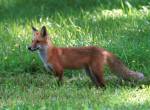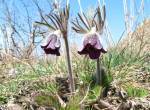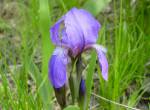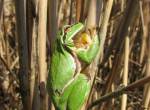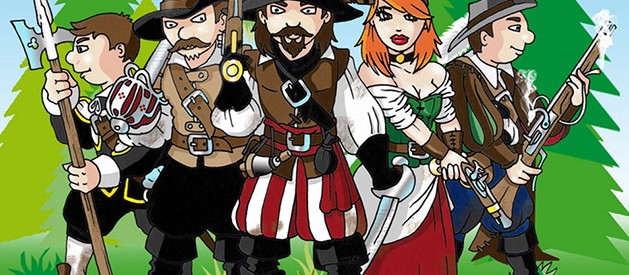
The educational journey of the robber Stetka
A nature trail around the surroundings of Štětí for the whole family, introducing the history and picturesque nature, industry and agriculture of Štetsko. The legendary robber Štětka and his four-member team are guiding the tour, giving information on a marked circuit starting from
In the old days of the Thirty Years' War, the robber Štětka was the master of the deep forests, fields and hillsides around the town of Štětí. Today, his home is the former Mordloch Cave, hidden away from people in the middle of the Stračen forests. Who knows him in the region. He protects the poor and honest, and justly punishes dishonesty and avarice. He has walked this land many times. He knows every road and footpath here.
During your adventurous journey with the robber Stetka you will come across educational boards that will tell you all about the history, nature, fauna and flora, industry and agriculture of the local region or visit the mythical cave Mordloch of the robber Stetka. You can also try out a discovery competition Following the footsteps of the robbers or robber geocaching.
Stops
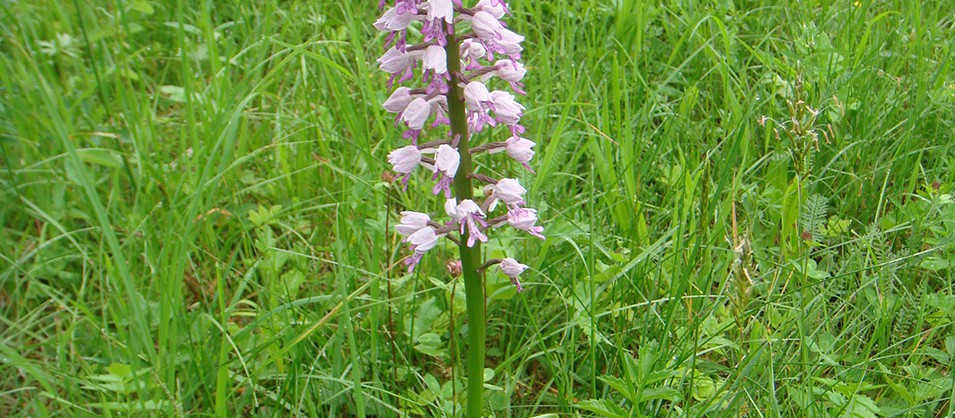
Újezd, Lomy
FAUNA AND FLORA OF THE STETTIN REGION
Flora of the Stettin region
The largest part of the Stettin region belongs to the so-called Central European forest flora. The original, main vegetation cover of the area consisted of forests, which have been replaced by cultivated woodlands over time. The most commonly cultivated tree species are Scots pine, oaks (winter and summer), spruce, beech. Among the non-native trees, red oak, black pine and weimutia are represented. However, there are also several areas of protected and rare plants in Radouň and Velké Hubenov.
Protected natural formation Radouň I. and II.
The first part of the protected natural formation is located on the slopes of the Brotka area north of the village on the hillside near the road to Křešov, the second part is located in the Karlovka area on the hillside south of the road to Čakovice. The main object of protection in these places is a species-rich community of steppe plants, the most striking of which are the military plant, the cross-leaved gentian, the wood anemone, the yellow flax and the meadow grass. Orchid hillsides near Velký Hubencov are an important site of steppe flora in Ústí nad Labem. The greatest rarity here is the frosted orchid, which blooms at the end of April with the meadow coneflower and the wood anemone. The area in Radouň was declared a protected natural area in 1983.
Orchis militaris (Orchis militaris)
Orchis militaris L. (Latin: Orchis militaris L.) is our Czech orchid, growing on calcareous soils and dry sunny hillsides, but it can also be found in rather wet habitats. It is a perennial herb 0.2-0.5 m tall, unbranched, leafless in the upper half, leaves are oblong-ovate, the inflorescence is dense, up to 0.2 m long, the 5 corolla petals are bent into a closed helmet, the last petal forms a conspicuous three-parted lip. It flowers from May to June, the fruit is a capsule.
Fauna of the Stettin region
Of the mammals, the most impressive are the larger game and vermin. After the Second World War, mouflon was planted in several places. Of the vermin, the fox is scattered, often persecuted as a carrier of rabies. The badger, and possibly the wild marten and the rock marten, are very rare. The musk deer can also be seen near the water. Of game birds, only the common pheasant is still abundant, often bred artificially in hatcheries. In addition to the common songbirds, the common nightingale and the garden dove can be found here.
Forests with a predominance of pine and mixed stands on acid soils are relatively poor and, with the exception of relict pines and some small-area enclaves, not very zoologically interesting. Leaving aside the relict pines mentioned above, we are left with deciduous forests dominated by oak and beech.
The Elbe River also played an important role in the economy of Štětí, as it was not only a widely used transport artery, but above all it was rich in fish. There were even salmon in the local waters. The fact that salmon was a very important fish in the local streams is also evidenced by the fact that the Jesuit Bohuslav Balbín dealt with the issue of salmon as early as the 17th century in his work 'History of the Diversity of the Kingdom of Bohemia', and the abundance of salmon is indirectly evidenced by the records of some chronicles in the Polabí region, where the family stipulated to their employers that they must not receive salmon more than twice or three times a week.
Breeding of Norwegian horses in Sukorady
The small family breeding of Norwegian horses in Sukorady was established in 1996 by the acquisition of the first 4 mares of the closed breeding of the University of Agriculture Prague, respectively the School Agricultural Enterprise Lány. Over time, the number of the original mares increased by purchase from private owners to the present 9 mares. Today the basic herd consists of 17 mares, 9 of which are original Lány mares.
Because of their character, hardworking nature and constitution, Norwegian horses are used in the forest, hippotherapy and as hobby horses. It is a hardworking, easy to handle, characterful horse. With a reasonable temperament. Easily fed, mobile with a moderately lofty, spacious gaits. Colour often brown and pure with all the special features. The colour of the ermine type, for which this breed was in great demand in the Middle Ages, is not an exception.

